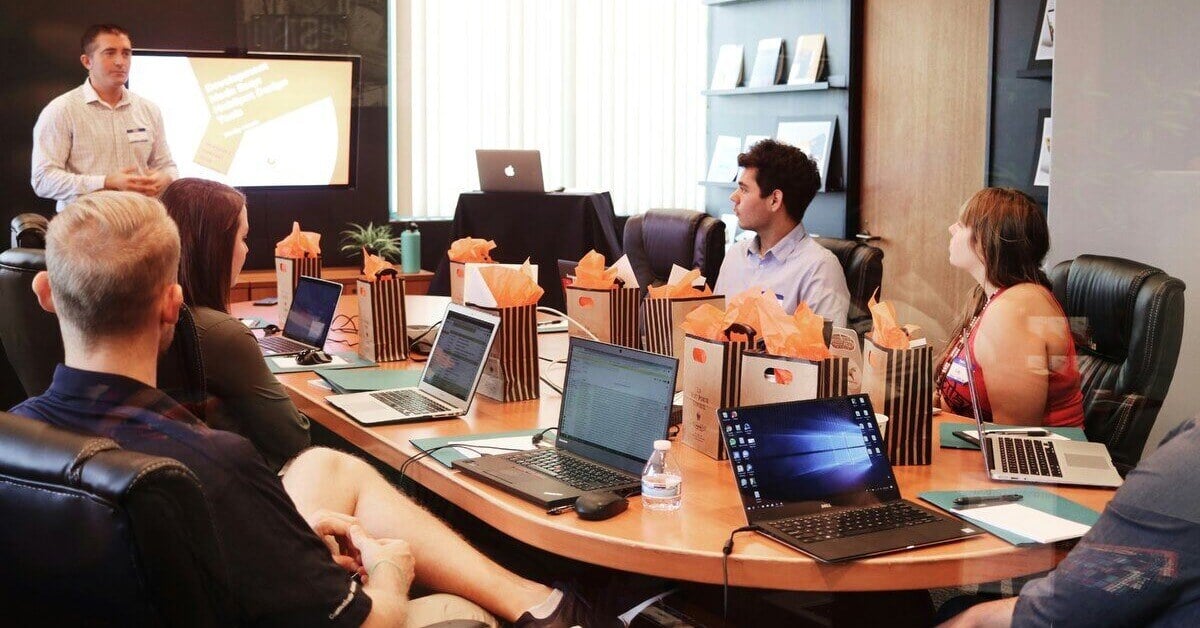Productize your training with simulations - an interview with Emer Keating

A recent conversation with ETU team member Emer Keating covered insightful ways to think about simulations from a product perspective. Highlights from the discussion are captured below.
Q: How would you categorize corporate training - as a service or a product?
A: To answer this, we must consider how it’s delivered. Instructor-led training is typically considered a service rather than a product because it involves direct interaction with learners. During a training session, the trainer engages with learners, answers their questions, and gathers both verbal and non-verbal feedback. This interaction provides a rich source of information, enabling the trainer to adjust and tailor the training to suit learners’ needs.
However, corporate training has evolved. Many training programs are now delivered digitally and asynchronously. Without face-to-face interaction, training has become more like a product than a service. One of the major advantages of productizing corporate training is that, unlike the service model, it provides consistency, scalability, cost savings, and measurable data on ROI.
An effective training product is built using the same approach as any other successful product, applying the principles of product design throughout its development process. In ETU, these principles are embedded into the development process, ensuring that its immersive simulations are built to drive measurable business outcomes, not just transfer knowledge.
Q: So what are the principles of good product design?
A: The principles are universal for all products. Think of any good product and you will see how it satisfies these principles:
- Easy to understand
- Easy to use
- Pleasing to the senses
- Price corresponds to value
- Delivers on its promise
The order of importance of these principles will vary from product to product, but they all matter. A food product, for instance, should be pleasing to the senses first and foremost. It needs to look, smell, and taste good. That can rate more highly than delivering on its promise of nutritional value.
Note how the principles of good design are closely connected. If something looks good, it may be easier to understand, and if it’s easy to use, it’s more likely to deliver on its promise. If a product tries hard to look “pretty” with unnecessary bells and whistles, users will likely notice, and those elements may irritate rather than impress.
Now, let’s consider an app for online banking. This type of product must be easy to understand and use, while also delivering on its promise of enabling customers to conduct their banking online. In terms of the senses, it’s important that the design is visually appealing, not just for aesthetics but for clarity. If the app makes the user feel that their time was well spent, the transaction went smoothly, the outcome was clearly communicated, and the experience felt safe throughout, then the app has succeeded.
While there is much to consider in designing a product, respecting the principles greatly increases the likelihood of success. Everything starts with a fundamental directive: step into the user’s—or learner’s—shoes. Unlike services, products lack the benefit of face-to-face interaction, making user feedback essential. Equally important is the ability to convert that feedback into a well-designed product.
Q: When you think about your work with the ETU platform, how do our simulations meet those principles you just mentioned?
A: ETU simulations fit perfectly into the principles of good product design. Take a look...
- Delivers on its promise: Studies have shown that employees are more likely to improve their skills through immersive simulations. Practicing skills in a safe, controlled environment allows learners to improve their skills while mitigating the risks of poor performance in the workplace.
- Easy to understand: The scenarios, characters, and topics used in ETU simulations are familiar workplace situations that learners can relate to and understand. Instead of passively watching, reading, or listening to training content, employees are immersed in scenarios and challenged to respond appropriately.
- Easy to use: The ETU platform provides a simple, user-friendly portal for delivering simulations to learners. It also provides easy-to-use features that enable learning administrators to manage the deployment of simulations and the learner data they generate.
- Price corresponds to value: Simulations are not only a more cost-effective means of upskilling employees compared to traditional training, but they also provide data and insights on learners' performance, which can lead to better management of skills and talent within an organization.
- Pleasing to the senses: The quality of the media used in ETU simulations makes the learning experience engaging for employees. Though live-action media is sometimes the preferred choice of customers, advancements in AI technology have made it possible to deliver beautifully crafted simulations for a fraction of the cost.
Q: What’s the number one factor that’s top of mind for you when designing a learning product?
A: A successful learning product is a learner-centered product. To ensure that ETU simulations meet the needs and expectations of learners and customers, we involve them throughout the design and development process and even long after our simulations have been deployed. Our data scientists analyze the impact of our simulations after learners have taken them.
Success is about being deeply acquainted with learners. At ETU, we gather feedback from learners and customers. We conduct learning experience reviews with people who are not involved in its development and who match the learner persona as closely as possible. We typically ask learners to fill out surveys at the end of each simulation. We strive to implement learner feedback and continuously adjust, iterate, and improve the learning experience.
When designing simulations, applying the principles of product design is crucial for creating an engaging learning experience. These principles become more effective when the learner is placed at the center of the design process. At ETU, we step into our learners' shoes to understand their perspectives, using their feedback to continuously improve the experience and drive better outcomes.
Ultimately, the learner is our primary focus throughout the design process. We believe that our learner-centered approach is the key to the effectiveness, popularity, and success of our simulations.
 Emer Keating, Learning Product Specialist
Emer Keating, Learning Product Specialist
Emer is an experienced learning experience designer, trainer, teacher, writer, editor, and communicator who brings expertise to all forms of digital content to ensure employees acquire the knowledge and skills they need for optimal performance in the workplace.

